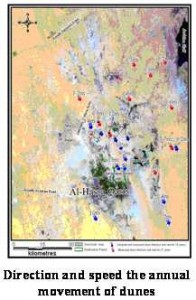Remote Sensing System (RSS)

Remote Sensing is the science and art of acquiring information (spectral, spatial, and temporal) about material objects, area, or phenomenon, without coming into physical contact with the objects, or area, or phenomenon under investigation. Without direct contact, some means of transferring information through space must be utilised. In remote sensing, information transfer is accomplished by use of electromagnetic radiation (EMR). EMR is a form of energy that reveals its presence by the observable effects it produces when it strikes the matter. EMR is considered to span the spectrum of wavelengths from 10-10 mm to cosmic rays up to 1010 mm, the broadcast wavelengths, which extend from 0.30-15 mm.
- Image processing.
- Image enhancement.
- Data Fusion.
- Rectification.
- Mosaicing.
- Classification.
- Data Extraction.
- Pattern Analysis.
- Surface Modeling.
- Change Detection.
- Digital Terrain.
- Feature Extraction.
- 3D Analysis.

- Euclidean geometry transformations such as enlargement, reduction, and rotation.
- Color corrections such as brightness and contrast adjustments, quantization, or color translation to a different color space.
- Digital compositing or optical compositing (combination of two or more images). Used in film-making to make a “matte”.
- Interpolation, demosaicing, and recovery of a full image from a raw image format using a Bayer filter pattern.
- Image registration, the alignment of two or more images.
- Image differencing and morphing.
- Image segmentation.
- High dynamic range imaging by combining multiple images.
- Geometric hashing for 2-D object recognition with affine invariance.
Applications of remote sensing data:
- DEM Extraction.
- Land Cover.
- Data Analysis.
- Scientific investigations.
- Resource management.
- Asset management.
- Archaeology.
- Assessment of Environmental impact.
- Urban planning.
- Cartography.
- Criminology.
- Logistics.
- Hydrographic Survey.
- Environmental management.
- Agriculture – Precision farming.
- Telecommunications network planning.
- Civil Protection.
- Urban & Regional Planning.
- Geological Mapping.
- Photogrammatry.
